8 Best Flowers For A Cutting Garden
Here are the prettiest flowers to grow in a cutting garden.
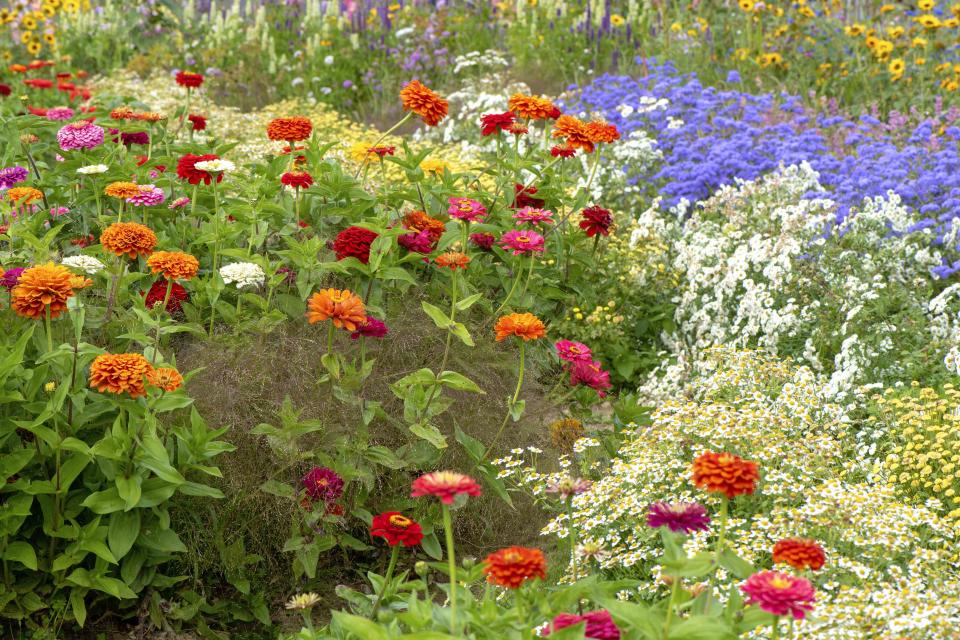
Getty Images / Jacky Parker Photography
Cutting gardens are trending, and with good reason: Flowers make us happy, and it doesn’t get any fresher than harvesting from your own back yard! “It’s rewarding to grow flowers you can bring inside to enjoy,” says grower Lisa Mason Ziegler of The Gardener’s Workshop in Newport News, Virginia, and author of The Cut Flower Handbook. “You only need a small space in order to grow enough flowers for bouquets every week.”
Tips for Growing a Cutting Garden
Start by choosing a designated spot for your cutting garden in full sun, which is considered 6 or more hours of direct sunlight per day. Flowers will not produce well in shade. An area the size of a picnic table (roughly 3 feet wide by 10 feet long) is sufficient, or you can plant in large containers, such as a half whisky barrel filled with potting mix, says Ziegler. Also, plant near a water source because dragging a watering can or 100-foot-long hose to your garden during the height of summer isn’t fun.
Choose the flowers you love the best, but stick with a few varieties your first year so you don’t feel overwhelmed. Many types of flowers can be direct seeded into the cutting garden, or you can purchase seedlings from nurseries. If you want to get a jumpstart on the growing season in cold climates, you can start seeds indoors.
You also can plant flowers that bloom beyond the summer months. “In the warmer regions of the South, many flowers that love cool weather can be planted in late September through November and overwintered so that they start blooming in March to May,” says grower Rita Williams of WilMor Farms Flowers in Metter, Georgia.
Don’t forget to protect your garden from rabbits and deer; they’ll chow down on flowers as readily as your vegetable garden. “We’ve learned the hard way, so we keep many of our flowers fenced,” says Williams.
Finally, once your flowers begin blooming, start cutting! “Don’t be afraid to cut your flowers frequently,” says Ziegler. “A plant’s whole job in life is to reproduce. The more flowers you cut, the more they produce.”
Meet The Experts
Lisa Mason Ziegler is a grower at The Gardener’s Workshop in Newport News, Virginia, and author of The Cut Flower Handbook.
Rita Williams is a grower at WilMor Farms Flowers in Metter, Georgia.
Sunflowers
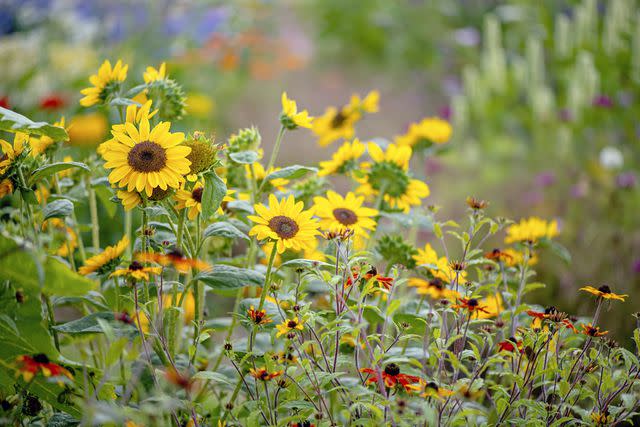
Getty Images / Jacky Parker Photography
Botanical Name: Helianthus annus
Soil Type: Well-draining soils with pH 6.0 to 7.0
Grower Tip: “Plant seeds spaced 6-inches apart, which helps control bloom size for perfect 4-inch blooms,” says Ziegler.
Sunflowers come in an array of colors and sizes, ranging from 3 to 8 feet tall, and they’re easy to grow from seed. They’re dependable producers. Lightweight row covers, such as AG-19, spread over the newly-planted seeds and baby plants to protect the seedlings from birds and digging rodents.
Favorite Varieties:
ProCut
SunFill
Rouge Royale
Celosia
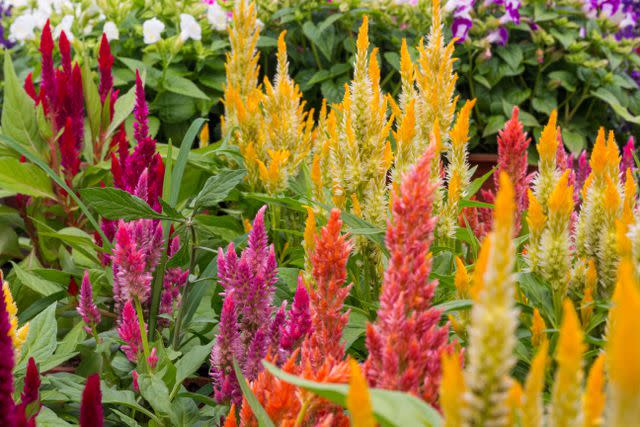
Getty Images / Wirestock
Botanical Name: Celosia spp.
Soil Type: Rich, well-draining soils with pH 6 to 6.5
Grower Tip: “These are one of the first cutting flowers we grew because they’re reliable and have a very long vase time,” says Williams.
Celosia come in an array of hues and forms. They thrive in the heat, making them a good choice for long, hot Southern summers. Grow a few different types: Cockscomb (Celosia cristata) look like the comb on a top of a rooster’s head, while feather celosia (Celosia plumosa) has fluffy plumes, and wheat celosia (Celosia spicata) resembles plumes of wheat.
Favorite Varieties:
Asuka
Chief
Intenz
Zinnia
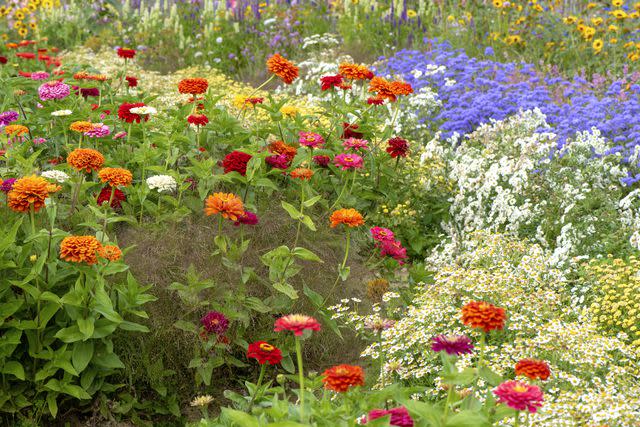
Getty Images / Jacky Parker Photography
Botanical Name: Zinnia elegans
Soil Type: Well-draining soils with pH 5.5 to 7.5
Grower Tip: “Space zinnias about 12 inches apart in the row to improve air flow and reduce the risk of developing powdery mildew, which sometimes occurs in hot, humid summer weather,” says Ziegler.
Zinnias are available in every color from pale blush pink to jewel-toned corals and oranges. Butterflies love them! A small patch will yield a handful of blooms a week if you harvest on a regular schedule.
Favorite Varieties:
Benary’s Giant
Oklahoma
Queeny
Cosmos
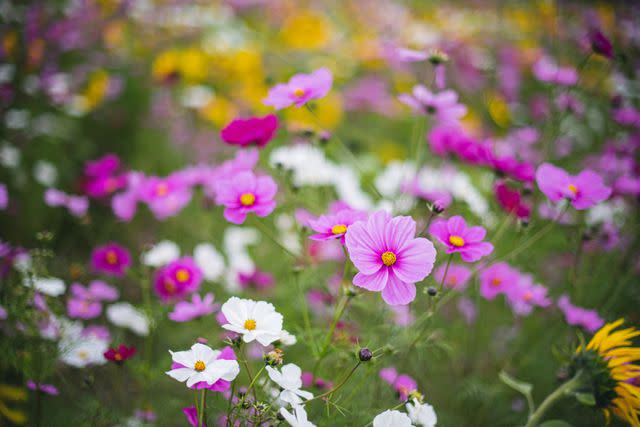
Getty Images / Tomohiro Fujita
Botanical Name: Cosmos bipinnatus
Soil Type: Average, well-draining soils with pH 6.0 to 8.0
Grower Tip: “These are a short day-length flower, so they bloom better in late summer to fall when day lengths are shortening,” says Ziegler.
With papery flowers and wispy foliage, cosmos make an alluring cut flower that comes in colors ranging from pure white to pale pink. They have a shorter vase life than some flowers but their light, airy texture makes them a must-have in a cutting garden.
Favorite Varieties:
Cupcake
Rubenza
Double-click
Bachelor’s Button

Getty Images / David Burton
Botanical Name: Centaurea cyanus
Soil Type: Rich, well-draining soils with pH 6.6 to 7.8
Grower Tip: “In warm regions, plant these in the fall to overwinter for early spring flowers,” says Williams.
The classic cornflower blue bachelor’s button looks smashing in bouquets, but you’ll also find these in various shades of pink and purple-blue. If plants won’t survive winters where you live, start seeds indoors in spring about 6 to 8 weeks before your area’s last expected frost.
Favorite Varieties:
Blue Boy
Magic
Romantic
Daucus
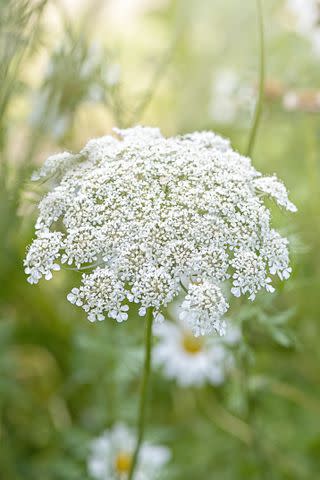
Getty Images / Jacky Parker Photography
Botanical Name: Daucus carota
Soil Type: Average soils with pH 6.0 to 8.0
Grower Tip: “These have a subtle blush color and are another fall-planted flower that do well in warm regions,” says Williams.
Daucus has large, flat, lacy blooms, that add an airy feel to bouquets. You can direct sow in fall in warm climates for early spring color. If plants won’t survive winters where you live, direct seed in garden in the spring after the last frost. If you leave a few flowers in place in the fall, they’ll self-seed for next year.
Favorite Varieties:
Dara
Basil

Getty Images / Ali Majdfar
Botanical Name: Ocimum basilicum
Soil Type: Rich, well-draining soils with pH 6.0 to 7.5
Grower Tip: “Basil adds a beautiful color and scent to bouquets, and several varieties hold up well as bouquet fillers,” says Ziegler.
You may not think of basil as part of a cutting garden, but it’s a delightful, fragrant addition to summer and fall bouquets. Harvest it regularly to keep new shoots forming.
Favorite Varieties:
Mrs. Burns’ Lemon Basil
Purple Ruffles
Cinnamon
Globe Amaranth
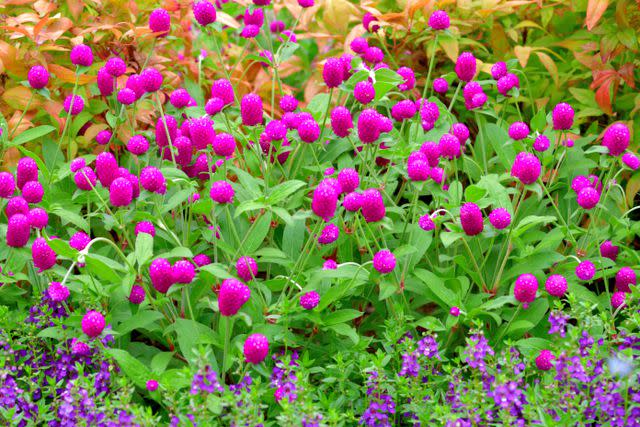
Getty Images
Botanical Name: Gomphrena globosa
Soil Type: Average, well-draining soils with pH 6.0 to 6.5
Grower Tip: “The little ball-shaped flowers air dry well and keep their brilliant color for bouquets and wreaths,” says Ziegler.
Tiny, globe-shaped blooms add zip to bouquets. With shades of purple and white, they’re a fun addition to your cutting garden for fresh and dried displays.
Favorite Varieties:
Audray
Tall
For more Southern Living news, make sure to sign up for our newsletter!
Read the original article on Southern Living.
